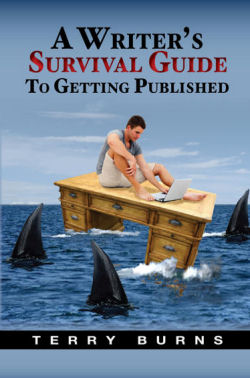|
When
we are finished writing a book, while everything is hot and fresh in
our minds, some vital things need to be prepared
that will be used in every step in the process of getting the book
represented, published, promoted, and sold.
First is the concept
sentence, promo sentence, or logline.
It is a single short, compelling sentence that tells the main concept
of the book.
Second is an elevator
pitch or cover copy.
It is a slightly longer version of the logline, two to three sentences
that are used to pitch the book to an agent or editor if we find
ourselves with a very brief opportunity to do so. Later it is used as
cover copy and in advertising and promotion. These first two items are
commonly used in cover letters as well.
Third is a short
synopsis or story summary.
This is a longer version of the first two, ideally half a page and
single-spaced. It is used to produce a one-page sell sheet, along with
the logline as an attention getter and with a very short writing-related
bio. This will go in the proposal. The editor will take this to a
project committee to try to get it accepted for publication.
An
agent, editor, or publicist can write this, but ideally the best person
to write it is the book’s author, the one who lived with the story from
the ground up. A person trying to create it based on a brief read will
surely not come up with as strong of an effort as the author.
Finally, we have the synopsis
itself. A two- to three-page, single-spaced synopsis gives the main
points of the story, including the ending or plot resolution. This is
not a chapter-by-chapter synopsis, which may be required by a few
editors. Editors reading a proposal may read a synopsis first before
reading the writing itself, read it after reading sample writing, or
not use it at all (but it should always be provided).
|
Some
submission guidelines
require the synopsis to be longer; regardless, always follow the
submission guidelines.
Even though these elements are
presented in this order, they are often produced in a reverse order,
boiling down the story to get the synopsis, boiling down the synopsis
to get the short synopsis or story summary, boiling down that to get
the elevator pitch or cover copy, and reducing it further to get the
logline.
To give our work the best chance
of success, the author of the work needs to give these tools to the
agent, editor, or publicist to give them the best chance of advancing
the work to its final conclusion. It is critical to craft them to the
best of our ability.


|









